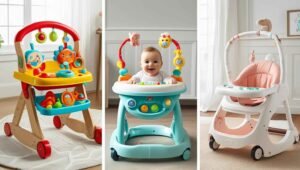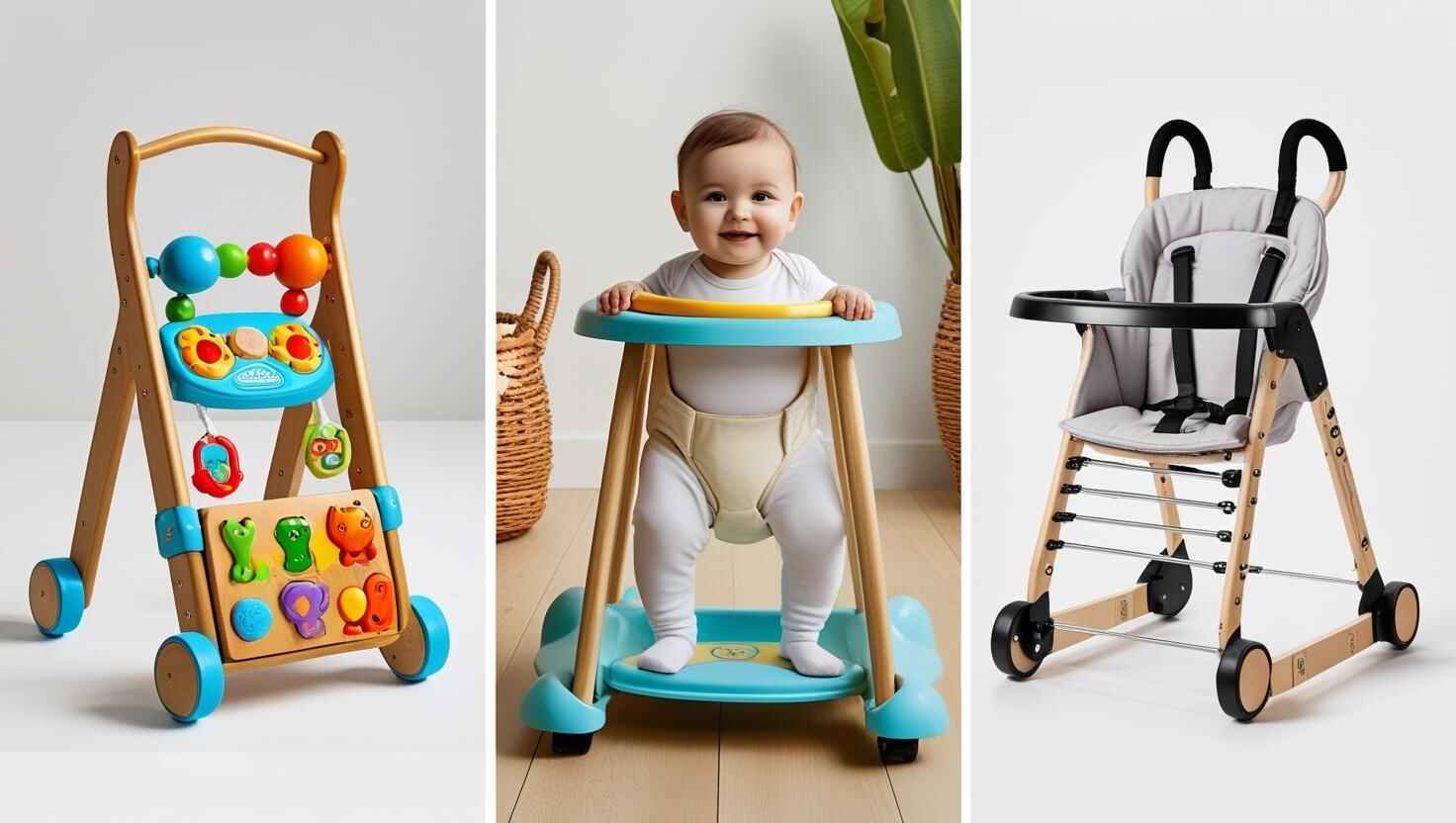When your little one starts showing signs of wanting to stand and move around, it’s a pretty exciting (and honestly, a little nerve-wracking) moment. A lot of parents start looking into baby walkers around this time — and it’s easy to see why. They promise a bit of freedom for your baby and maybe even a tiny break for you. But with so many options on the market, finding the best rated baby walkers can feel like a huge task. Don’t worry, though — we’re going to make it easy.
In this guide, we’ll walk you through everything you need to know about baby walkers: which ones top the charts, what to look for, and some extra details that might make all the difference. Let’s get started!
First things first — what exactly are baby walkers, and why do people love them so much? Baby walkers are little mobile seats with wheels that help your baby move around independently before they’re fully able to walk on their own. Some designs focus more on entertainment, with toys and sounds, while others are purely functional to help strengthen little muscles and coordination skills.
That being said, it’s important to know that not all baby walkers are created equal. Some have better safety features, better support, and more thoughtful designs than others. In fact, pediatricians often recommend looking for walkers that emphasize stability and don’t encourage risky movements that could lead to tumbles.
And that’s why looking for best rated options matters so much. Ratings are typically based on safety, durability, ease of use, and — of course — how much babies actually like them. Plus, it’s reassuring to see thousands of other parents vouching for a product you’re considering.
Now that you’ve got the basics, let’s dive into the top-rated baby walkers that parents just can’t stop raving about.
Best Rated Baby Walkers for 4-8 Months Comparison Table
Here’s a quick look at some of the highest-rated options out there. Each one shines in its own way, depending on what you’re looking for.
| Baby Walker | Key Features | Best For |
Joovy Spoon Walker |
Wide base, adjustable height, dishwasher-safe tray | Simplicity and stability |
| VTech Sit-to-Stand Learning Walker | Interactive panel, removable toy station, strong grip wheels | Play-based learning |
| Safety 1st Dino Sounds ‘n Lights Discovery Walker | Multiple activities, adjustable height, compact folding | Compact storage |
| Baby Trend 2.0 Activity Walker | High-back seat, toy bar, large tray | Extra support and comfort |
| Bright Starts Walk-A-Bout Walker | Lights, sounds, high seat back, sturdy frame | Entertainment and support |
| Disney Baby Minnie Mouse PeekABoo Walker | Fun design, multiple height positions, padded seat | Disney lovers |
Each of these baby walkers has something special going for it, and the “best” really comes down to what your baby needs and what makes your life a little easier.
Key Features to Look for in a Baby Walker (List Style)
If you’re feeling overwhelmed by all the choices, here’s a list of key features to keep in mind while shopping. Think of it as your mini checklist while you browse:
- Safety First
Always, always check for solid construction, wide bases (to prevent tipping), and safety certifications. Some walkers have brakes or friction strips to slow things down when needed. - Adjustable Height Settings
Babies grow fast — like, faster than you think! A walker with adjustable height settings can save you money and extend how long your baby can use it comfortably. - Comfortable Seat
Look for a well-padded, supportive seat that’s easy to clean. A high-back seat is even better for giving extra support to little bodies just learning to sit upright. - Mobility and Stability
Wheels should move easily without being too “slippery.” Some walkers have wheels that work better on carpet, while others are designed more for hardwood floors. - Entertainment Value
Toy trays, music, lights — all these little extras can keep your baby engaged while building their motor skills. Just make sure they aren’t too distracting or noisy for you. - Ease of Cleaning
Let’s be real — babies are messy. Look for walkers with removable, machine-washable seat covers and wipeable trays. - Portability
If you’re short on space or want to travel with your walker, check how easily it folds up. Some are super compact while others, not so much. - Weight Limit and Age Recommendations
Always check the product details for weight and age guidelines. Every walker has its own limits and it’s important to stay within those for safety reasons.
Keeping these features in mind will make picking the right walker feel a lot less stressful — promise!

FAQs About Baby Walkers
Are baby walkers safe?
Baby walkers are safe when used properly and under supervision. It’s important to choose a walker that meets safety standards, has a wide base, and offers features like brakes or friction strips. Always supervise your baby while they’re using a walker and keep them away from stairs, pools, and uneven surfaces.
What age is best for a baby to use a walker?
Most babies start using walkers between 4 to 8 months old, but it depends on your child’s strength and development. Your baby should be able to sit up independently and have good head control before trying a walker.
Do baby walkers help babies learn to walk?
This is a bit tricky. Walkers don’t necessarily teach babies how to walk — in fact, some pediatricians say they might slightly delay it because babies rely on the support instead of strengthening the muscles needed for independent walking. However, walkers can help build leg strength, coordination, and give babies a sense of mobility.
How long should a baby stay in a walker each day?
Moderation is key. Experts usually recommend keeping walker sessions short — around 15 to 20 minutes at a time. Long periods in a walker aren’t ideal for development and could tire out your baby.
What surfaces work best for baby walkers?
Flat, smooth surfaces like hardwood or tile floors tend to work best. Thick carpets can make it hard for wheels to roll properly, though some walkers are specially designed for mixed surfaces.
Is a sit-to-stand walker better than a seated walker?
It depends on what you’re looking for. Sit-to-stand walkers encourage more active walking skills and balance training. Seated walkers, on the other hand, give babies a chance to move before they’re strong enough to balance on their own. Some parents even use both at different stages!

Choosing the best rated baby walker isn’t about finding the fanciest one on the shelf — it’s about finding the right fit for your baby and your lifestyle. Whether you’re after something simple and sturdy like the Joovy Spoon, or an engaging toy-filled option like the VTech Sit-to-Stand, there’s a walker out there that’s perfect for you.
Take your time to think about what matters most: safety, comfort, entertainment, ease of cleaning, or portability. Chances are, you’ll find a walker that checks all your boxes — and then some.
Remember, a walker is just one tool in your baby’s journey toward independence. No matter which one you choose, the real magic happens with your encouragement, love, and lots of practice.
So breathe easy, enjoy the ride (and the inevitable wobbles), and get ready for some adorable first steps!

